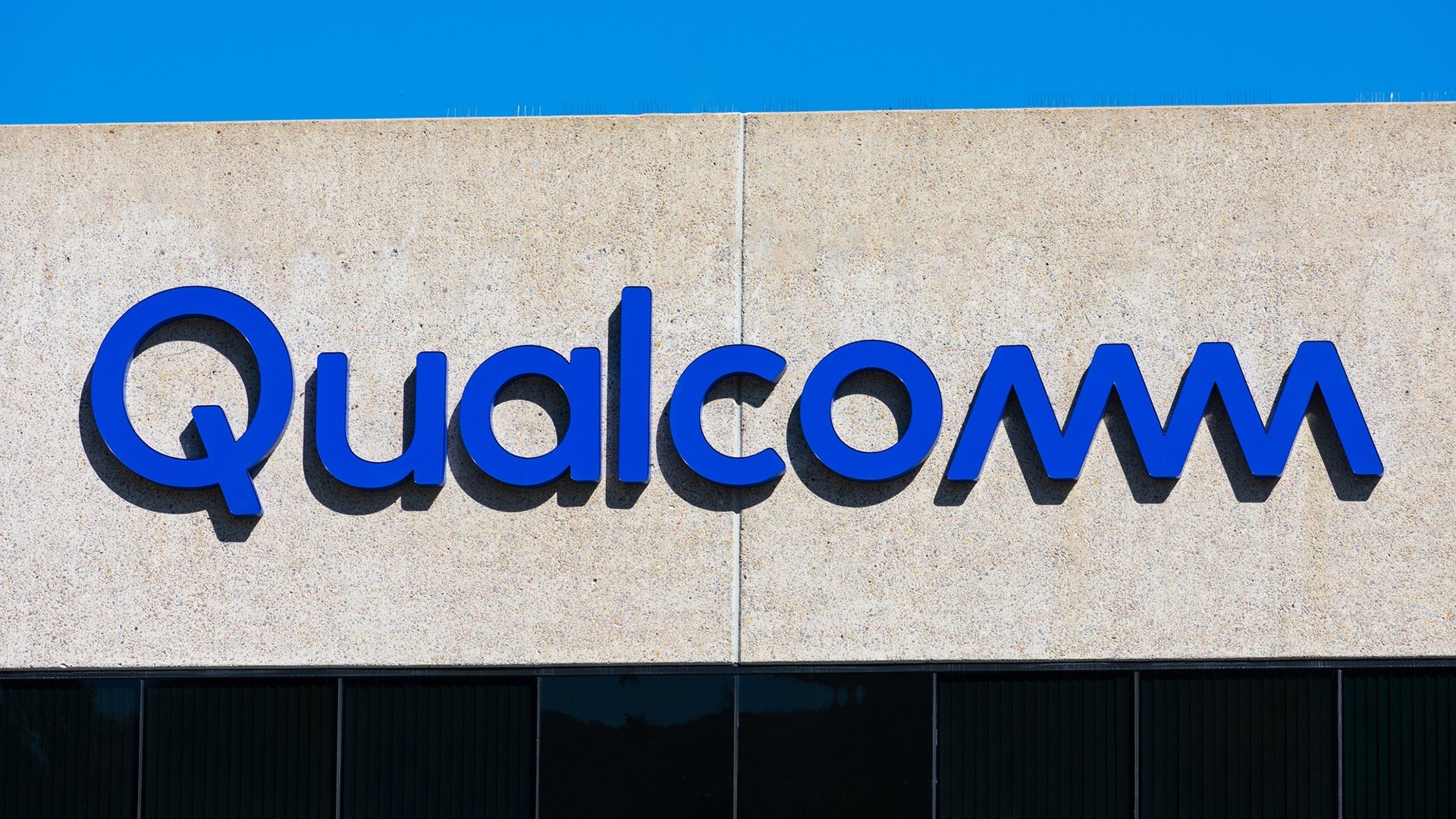Analyst(s): Olivier Blanchard
Publication Date: February 7, 2025
Qualcomm reported record Q1 FY 2025 revenue, driven by strong premium-tier handset demand and continued momentum in automotive, which posted its sixth consecutive quarter of record revenues. QCT revenue surpassed $10 billion for the first time, while AI adoption across devices gained traction.
What is Covered in this Article:
- Qualcomm’s record Q1 FY 2025 revenue and key growth drivers
- QCT segment strength: Handsets, IoT, and Automotive performance
- AI expansion across PCs, edge computing, and automotive
- QTL revenue outlook and Huawei licensing uncertainty
- FY 2025 guidance and Qualcomm’s diversification strategy
The News: Qualcomm Inc. (NASDAQ:QCOM) reported Q1 2025 non-GAAP revenue of $11.7 billion (6.8% above consensus), up by 18% year-on-year (YoY). The Qualcomm CDMA Technologies (QCT) segment revenue increased by 20% YoY to reach a record quarterly high of $10.1 billion, primarily due to broad-based strength across Handsets (+13% YoY to $7.6 billion), IoT (+36% YoY to $1.5 billion) and Automotive (+61% YoY to $961 million). The Qualcomm Technology Licencing (QTL) segment revenue rose by 5% YoY to $1.5 billion. Non-GAAP operating income rose by 23% YoY to $4.4 billion, and the corresponding margin expanded to 37.9% (Q1 2024: 36.1%). Non-GAAP net income increased by 24% YoY to $3.8 billion (15% above consensus). Non-GAAP diluted earnings per share (EPS) rose by 24% YoY to $3.4, beating the consensus mark by 15%.
“We are very pleased to have achieved quarterly revenue records, which reflect the strength of our technology, product roadmap, and end-customer demand,” said Cristiano Amon, CEO of Qualcomm. “We are delivering growth across our diversification initiatives and remain committed to executing on our FY 2029 targets to achieve $22 billion of non-handset revenues.”
Qualcomm’s Q1 FY 2025 Earnings: Record QCT Revenue and Expanding AI Adoption
Analyst Take: Qualcomm delivered a solid performance in Q1 FY 2025, showcasing its ability to drive revenue growth across premium-tier smartphones, automotive, and IoT. With QCT revenue surpassing $10 billion for the first time, the company reaffirmed its steady footing in the semiconductor market. However, uncertainties around Qualcomm’s licensing business (QTL) – particularly ongoing negotiations with Huawei – have raised concerns about near-term revenue stability. Despite this, Qualcomm’s effective expansion into the AI PC, automotive, XR, and increasingly AI-driven IoT segments validates the company’s long-term growth strategy beyond the mobile handset market.
QCT Handsets: Strengthening Market Position in Premium Smartphones
Qualcomm’s QCT Handsets division posted record revenue of $7.6 billion, up 13% YoY, fueled by increased unit sales, higher content per device, and rising average selling prices (ASPs). Demand for premium-tier smartphones played a key role, with the Snapdragon 8 Elite for Galaxy, featured in Samsung’s Galaxy recent S25 series launch, emerging as a major future growth driver as agentic AI becomes a critical feature in the Mobile segment. Qualcomm’s expanding presence among Chinese OEMs further highlights its growing market share in the high-end Android segment.
Although overall smartphone shipment growth remains relatively flat, Qualcomm continues to benefit from premiumization trends – with premium-tier devices (>$400) now accounting for over 30% of the market, up from 21% in 2020. This shift works in Qualcomm’s favor, particularly as advanced on-device AI capabilities in Snapdragon chipsets enhance user experiences and drive demand for high-performance mobile solutions.
QCT IoT: Recovery and Expansion into AI-Powered Edge Computing
Qualcomm’s IoT segment grew 36% YoY to $1.5 billion, marking a strong recovery after previous quarters of mixed and occasionally disappointing results. This growth was fueled by new AI-driven product launches across consumer, industrial, and networking applications. The Snapdragon X Series is gaining momentum in AI PCs, with over 80 designs currently in production or development and 100 commercialized designs targeted by 2026 – reinforcing Qualcomm’s expansion into AI-enabled computing.
We also see Snapdragon’s AI-capable chipsets’ low-power capabilities as a possible driver of growth in the Industrial IoT segment, suggesting a reasonable likelihood of resurgence in the IIoT market beginning in 2025. Simultaneously, the Qualcomm Aware Platform continues to gain traction, integrating AI-powered monitoring and location capabilities across logistics, retail, and smart home applications.
Meanwhile, Qualcomm’s AI On-Prem Appliance and Inference Suite provide enterprises with private AI deployment solutions, aligning with rising demand for Wi-Fi 7, 5G fixed wireless access, and AI-powered edge solutions. These trends position Qualcomm as a key player in the rapidly expanding edge computing market.
QCT Automotive: Sixth Consecutive Quarter of Record Revenue
Automotive continues to be a major long-term growth driver for Qualcomm, with Q1 2025 revenue reaching a record $961 million, up 61% YoY – marking the sixth consecutive quarter of record automotive revenue. Adoption of the Snapdragon Digital Chassis continues to expand among global automakers, reinforcing Qualcomm’s position in the software-defined vehicle segment.
At CES 2025, Qualcomm showcased its leadership in AI-driven automotive solutions, announcing key collaborations with Hyundai Mobis, Amazon, and Tier-1 suppliers. The Snapdragon Ride Flex SoC is being integrated into next-gen ADAS and in-cabin systems, aligning with the industry’s move toward AI-powered vehicle intelligence. Additionally, Qualcomm launched Snapdragon Digital Chassis Workbench, a cloud-based development platform designed to accelerate automotive software innovation. With automakers increasingly investing in the cockpit, telematics, and ADAS platforms, Qualcomm is well-positioned for continued growth in the automotive sector.
Expanding TAM: Qualcomm’s Path to Diversification Beyond Handsets
At its 2024 Investor Day, Qualcomm outlined an expanded Total Addressable Market (TAM) of $900 billion by 2030. Notably, over 50% of future growth is expected to come from non-handset businesses, including AI PCs, edge computing, XR, and automotive. The company aims to generate $22 billion in non-handset revenue – a key part of its diversification strategy.
A crucial aspect of this expansion is leveraging core handset technologies – such as AI, connectivity, and computing innovations – to fuel growth in adjacent high-growth segments. This approach optimizes R&D spending while unlocking new revenue streams, creating an operating-leverage effect that supports earnings growth outpacing revenue expansion.
While smartphones remain Qualcomm’s largest revenue contributor, the company’s diversification strategy into AI-powered computing, industrial IoT, and software-defined vehicles, opens up significant runways to growth in what continue to be rapidly expanding technology segments. Additionally, this strategy helps mitigate what some fear could be a revenue loss of ~$5 billion annually starting in 2027, should Apple’s in-house modem development prove successful. By capitalizing on AI-driven innovations across industries, Qualcomm is reinforcing its competitive positioning and future growth trajectory while simultaneously edging against potential headwinds.
Guidance: Solid Outlook Amid Licensing Uncertainty
For Q2 FY 2025, Qualcomm projects non-GAAP revenue between $10.2 billion and $11 billion, with QCT revenue expected to range from $8.9 billion to $9.5 billion. This forecast reflects strong YoY growth across automotive (+15%) and IoT (+50%), while QCT Handset revenue is expected to rise by 10% YoY, driven by increasing shipments for Samsung’s Galaxy S25 smartphones.
However, QTL revenue is projected to remain flat at $1.25 billion to $1.45 billion as licensing negotiations with Huawei remain unresolved. The company’s non-GAAP EPS guidance of $2.7 to $2.9 also reflects this uncertainty, with Huawei’s expired agreement previously contributing 10-15 cents per share per quarter. The outcome of these negotiations could impact full-year revenue and earnings visibility.
Despite these uncertainties, Qualcomm’s robust product momentum, AI leadership, and continued strength in premium smartphones provide a solid foundation for sustained revenue expansion in FY 2025.
Looking Ahead: Sustaining Growth Through AI and Market Expansion
Qualcomm’s long-term growth strategy hinges on AI-driven product innovation and diversified revenue streams. The increasing adoption of on-device AI across smartphones, PCs, IoT, and automotive aligns with the industry’s shift toward localized AI processing over cloud-based inference. That said, headwinds remain, including smartphone demand fluctuations, licensing revenue stagnation, and competition from alternative chip architectures – particularly Apple’s in-house modem efforts and MediaTek’s AI chip advancements, especially in high-volume price tiers.
However, Qualcomm’s ability to execute on its $22 billion non-handset revenue target by FY 2029, paired with its premium handset market share gains, solidifies its position as a leading AI-driven semiconductor powerhouse poised for long-term success.
Daniel Newman and his co-host of The Six Five Webcast, Patrick Moorhead of Moor Insights and Strategy discusses Qualcomm’s earnings in their latest episode. Check it out here and be sure to subscribe to The Six Five Webcast so you never miss an episode.
Read the full press release on the Qualcomm website.
Disclosure: The Futurum Group is a research and advisory firm that engages or has engaged in research, analysis, and advisory services with many technology companies, including those mentioned in this article. The author does not hold any equity positions with any company mentioned in this article.
Analysis and opinions expressed herein are specific to the analyst individually and data and other information that might have been provided for validation, not those of The Futurum Group as a whole.
Other insights from The Futurum Group:
Qualcomm’s Q4 FY2024 Earnings: Strong Growth and Strategic Diversification
Qualcomm, IBM, SAP: Shaping the Future of AI – A Recap from The Six Five Webcast
Qualcomm Launches Snapdragon 8 Elite: Android’s Smartest Flagship Tier Mobile SOC
Author Information
Olivier Blanchard is Research Director, Intelligent Devices. He covers edge semiconductors and intelligent AI-capable devices for Futurum. In addition to having co-authored several books about digital transformation and AI with Futurum Group CEO Daniel Newman, Blanchard brings considerable experience demystifying new and emerging technologies, advising clients on how best to future-proof their organizations, and helping maximize the positive impacts of technology disruption while mitigating their potentially negative effects. Follow his extended analysis on X and LinkedIn.





